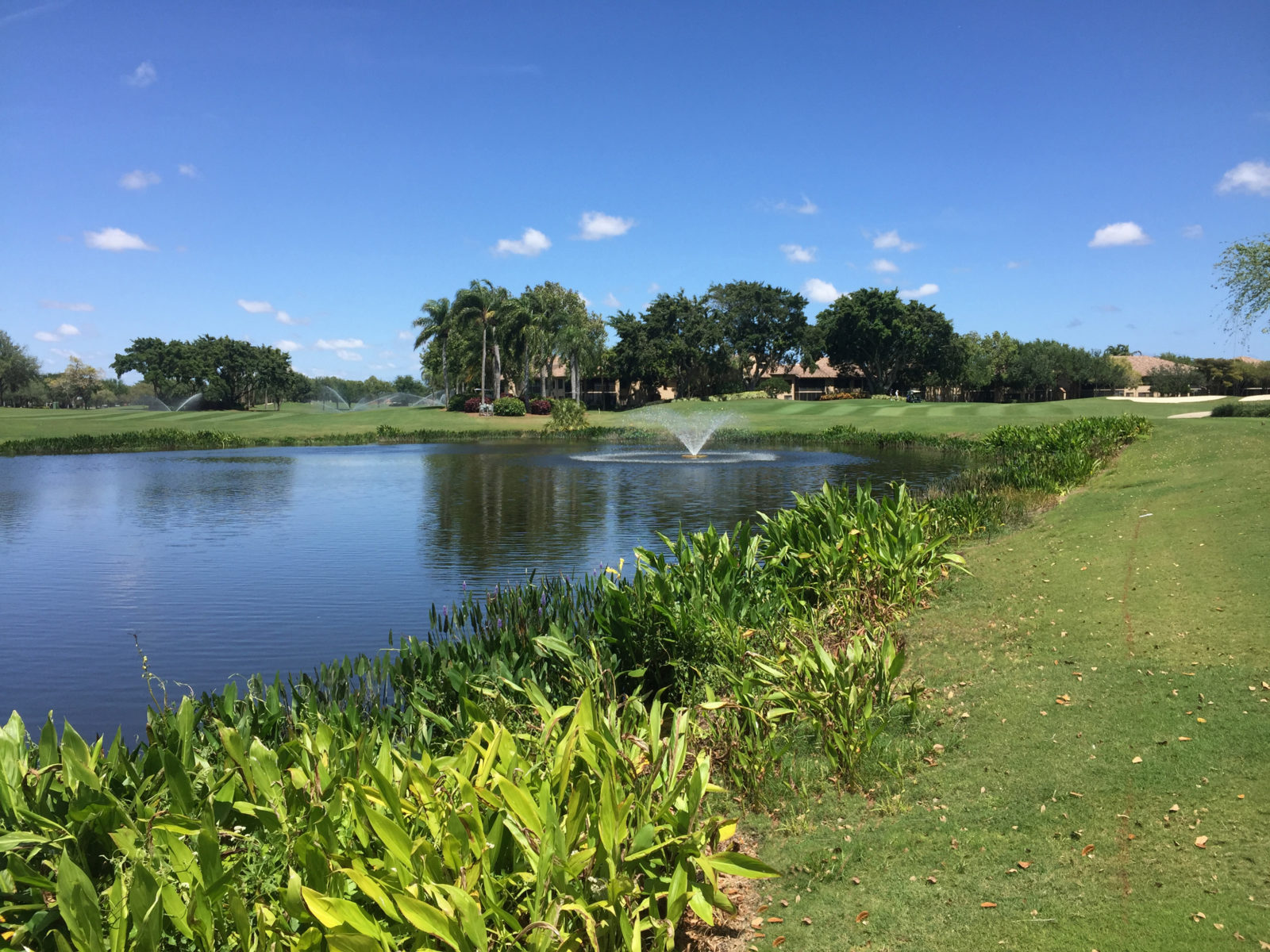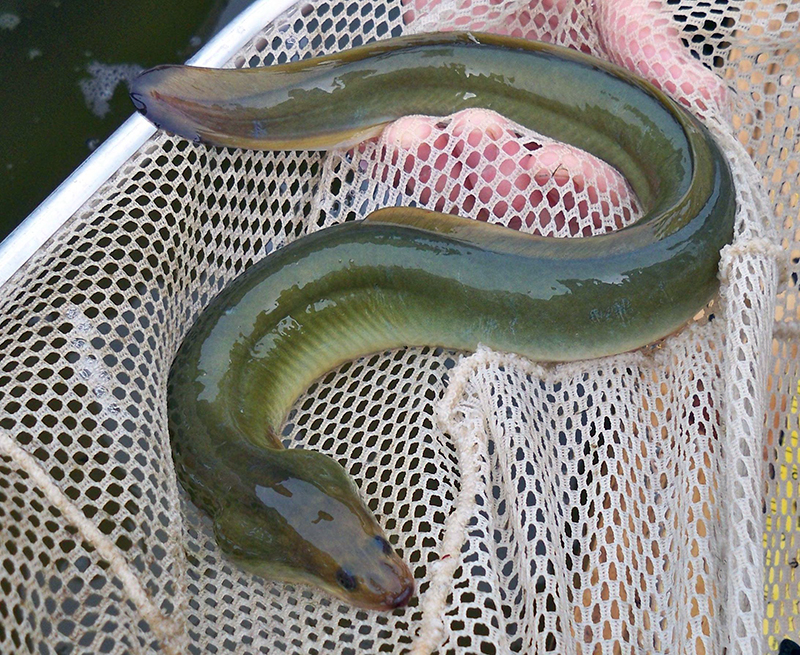

Do American Eels Hurt My Lake or Pond?
Perhaps no other fish on the east coast of North America is more secretive and mysterious than the American Eel. It is very common to find eels in ponds while electrofishing. Once in the livewell, the pond owner usually says something like “I have lived here for years and had no idea eels were even in my pond.” Although they look and move more like a snake than a fish, they are just as much a fish like largemouth bass. They are found in almost every impoundment along the coast, but not many people know much about them, where they came from, or how they got into their pond.
Let’s start from their beginning. American Eel are catadromous, meaning they are born in saltwater but grow up in freshwater. They are actually born in the Atlantic Ocean, thousands of miles away in the Sargasso Sea. Populations from the east coast of the U.S. actually reproduce at the same time and place as the European Eel, creating a panmictic (truly mixed) population. Sadly, adult eels are assumed to die after spawning, as adults have never been seen returning to the mainland. Baby eels are called leptocephali and look a lot like the leaf of a willow tree. They begin their return journey riding along the Gulf Stream currents. After about a year, they transform into ‘glass eels’ during their transition between the ocean and freshwater. Their skin is actually transparent, and you can even see their gills and heart inside of them!
Once back in freshwater, glass eels begin to turn into yellow eels. These yellow eels are what we typically see when electrofishing or what people catch when fishing. They can also be found anywhere that water flows to the ocean, from the Great Lakes to the Mississippi, and all the way to South Dakota. Imagine swimming from the Sargasso to Minneapolis! Young eels looking for a place to live can actually move over land when it’s wet, following rain runoff around small barriers like dams until they find a place they want to grow up, like in your pond.
Adult eels spend about 5 years in freshwater and can reach up to 40 inches in size, with females growing much larger than the males. Some larger eels have been found to be up to 15-20 years old! During the day they stay hidden from sight in deep, dark areas, only coming out at night to feed. They eat a lot of stuff near the bottom, like worms, clams, and other mollusks and crustaceans. They also eat small fish. Then finally one spring, yellow eels will turn color one last time to silver, before they leave the ponds and streams they grew up in and head back to the same place in the ocean where they were born.
Though they are a million dollar fishery in the Chesapeake Bay watershed, there used to be a lot more of them in our rivers. Unfortunately, dams have greatly reduced their distribution and access to suitable habitat. On the St. Lawrence River there used to be 25,000 to 30,000 eel a day seen going over the 90-foot-high Moses Saunders Hydroelectric Dam in Ontario. Today, that number has been reduced to 25 to 30. But it’s not too late to help this troubled species. A single 22 foot tall dam was removed near Fredericksburg, VA in 2004 and since then eels have been found more than 100 miles upstream!
If you have ever seen an eel in your lake or pond, you’re lucky. I once saw one almost 4 feet long swimming behind my anchored boat while fishing for catfish on the St. Lawrence River. If you happen to catch one, try not to drop it in your boat. Their scales are really small, smooth and slimy. If you do drop one, good luck!
Contact the experts at 888-480-5253 for your lake, pond, wetland, and fisheries management needs.
SOLitude Lake Management is an environmental firm committed to providing full-service solutions that improve water quality, preserve natural resources, and reduce our environmental footprint. Our services include lake, pond, wetland and fisheries management programs, algae and aquatic weed control, mechanical harvesting, hydro-raking, installation and maintenance of fountains and aeration systems, water quality testing and restoration, bathymetry, lake vegetation studies, biological assessments, habitat assessments, invasive species management and nuisance wildlife management. Services, consulting and aquatic products are available to clients nationwide, including homeowners associations, multi-family and apartment communities, golf courses, commercial developments, ranches, private landowners, reservoirs, recreational and public lakes, municipalities, parks, and state and federal agencies. Learn more about SOLitude Lake Management and purchase products at www.solitudelakemanagement.com.









